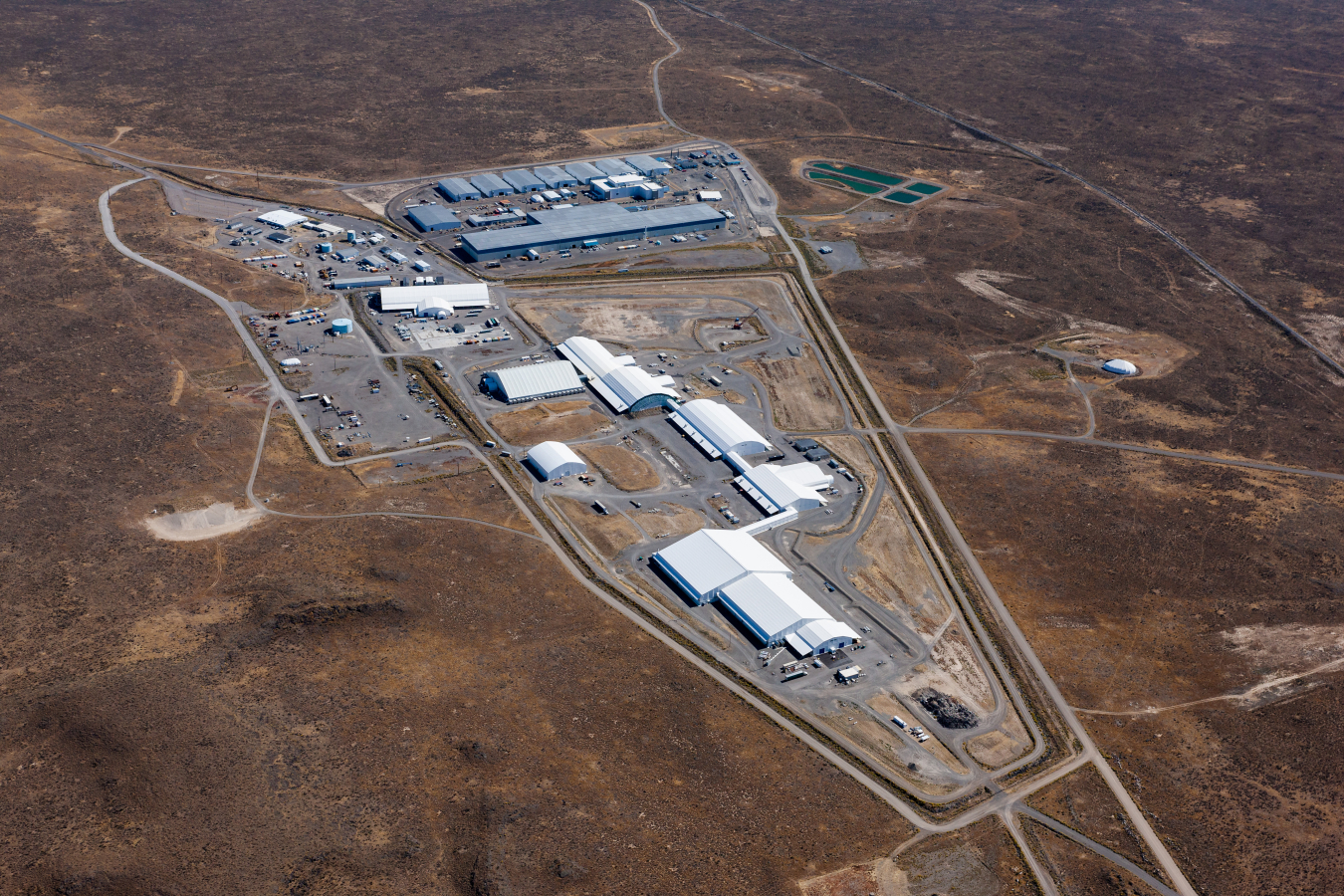EM’s Idaho Cleanup Project (ICP) recently took the first step toward achieving an end state for a Cold War-era landfill where crews have completed cleanup.
Office of Environmental Management
October 25, 2022
The Subsurface Disposal Area, foreground, at the Idaho National Laboratory (INL) Site will undergo a significant transformation over the next two years. EM and its INL Site contractor are set to demolish the soft-sided Accelerated Retrieval Project buildings to prepare the Cold War-era landfill for its end state.
IDAHO FALLS, Idaho – EM’s Idaho Cleanup Project (ICP) recently took the first step toward achieving an end state for a Cold War-era landfill where crews have completed cleanup.
ICP and contractor Idaho Environmental Coalition (IEC) signed a contract agreement outlining the scope, cost and schedule for demolishing above-ground, soft-sided structures at the 97-acre Subsurface Disposal Area (SDA) at EM’s Idaho National Laboratory Site.
That first step is an important one, according to Connie Simiele, senior director of IEC Essential Missions.
“This first end-state task order is the result of excellent teamwork and is a critical step in the delivery of our contract,” she said.
The initial work covered by the contract agreement was demolition of Accelerated Retrieval Project (ARP) IV, where workers removed targeted buried waste in 2010. IEC tore down ARP IV on Oct. 14.
Next, crews will demolish ARP V, which was used to exhume targeted radioactive and hazardous waste from Pit 9, a one-acre disposal pit that accepted primarily Rocky Flats Plant waste from 1967 to 1969. Demolition of other ARP structures will follow the teardown of ARP IV and V.
From 2005 to early 2022, crews removed targeted radioactive and hazardous waste from a combined 5.69 acres of the SDA. Waste removal took place in nine soft-sided ARP buildings. EM completed demolition of two of those buildings — ARPs I and VI — in 2012 after waste exhumation was complete.
Once all ARP buildings are demolished, the debris will be left in place and covered with clean gravel. It will serve as the base of an earthen cover that will be constructed over the entire SDA to protect the underling Snake River Plain Aquifer.
In addition to demolishing buildings, the contract agreement includes the scope, schedule and cost of formally closing wells once used to extract and treat solvent vapors beneath the landfill. The vapors were present in degreasers used during weapons development work.
The degreasers and other solvents were placed in barrels and boxes that were buried in shallow, unlined trenches in the SDA. Over time, the barrels and boxes degraded, releasing the vapors into the surrounding soil.
Dan Coyne, senior director of IEC Waste Management and Decontamination and Demolition, said he was pleased with the final contract agreement.
“This complex proposal was only possible with the hard work, timely input and structured approach of a knowledgeable, integrated project team,” Coyne said.
The work detailed in the agreement is to be completed by the end of 2024.
To receive the latest news and updates about the Office of Environmental Management, submit your e-mail address.

